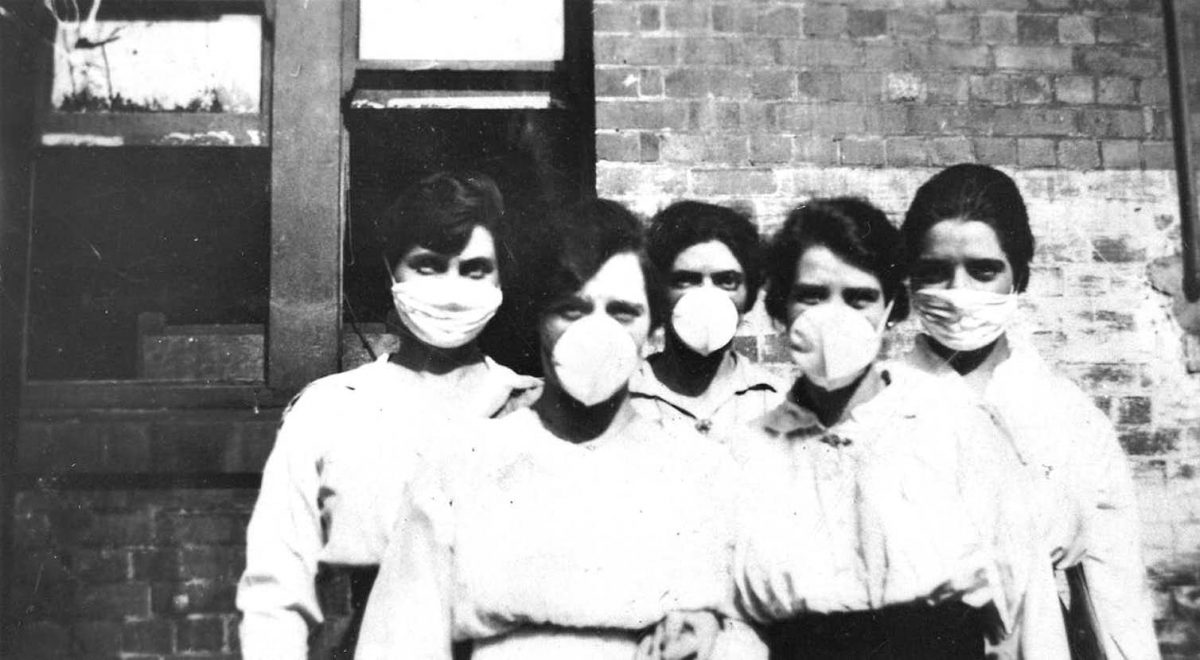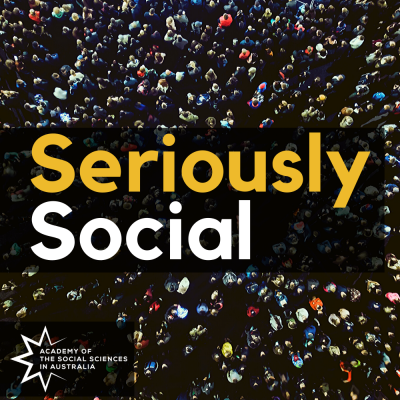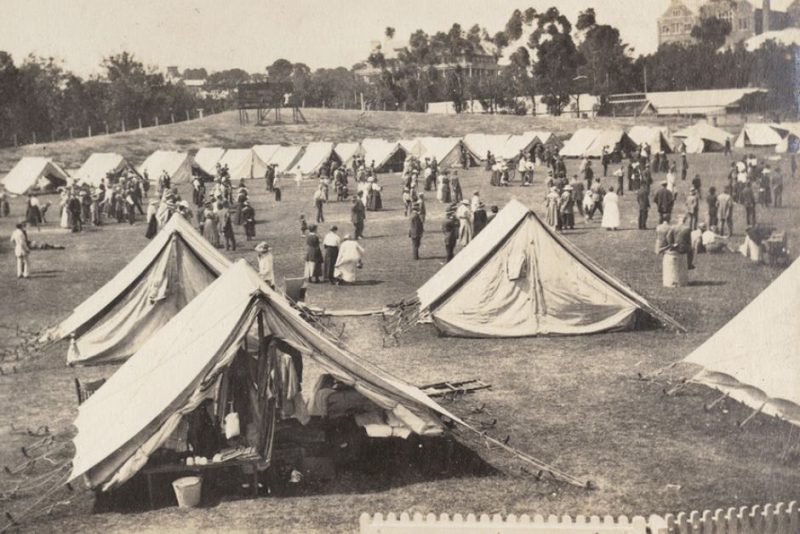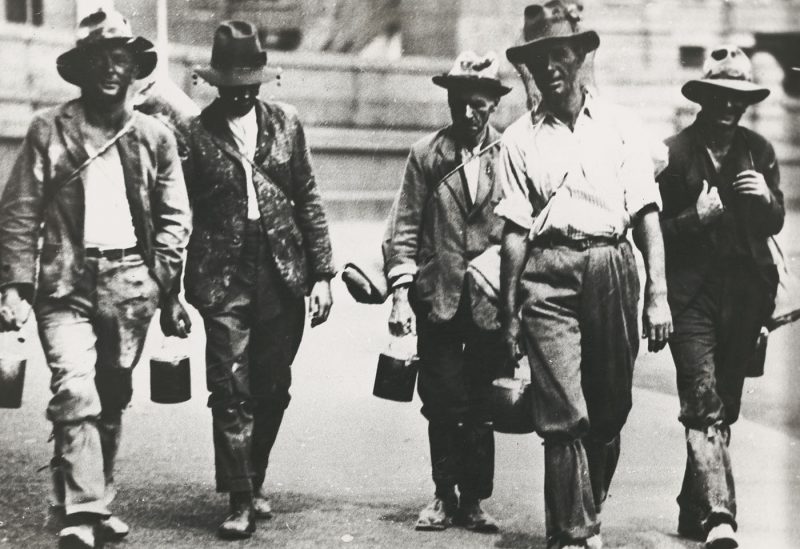
Women wearing masks in Brisbane during the Spanish Influenza outbreak. Photo: National Museum of Australia
“When something global and catastrophic like this happens,” says historian Frank Bongiorno, “I like to ask: ‘what does history have to offer?’.” The Australian National University history professor features on the debut episode of Seriously Social, a new podcast where Australia’s best social scientists help us understand the social impacts of the COVID-19 crisis and how to make it out the other side. It’s the first in a new series brought to you by the Academy of The Social Sciences in Australia and hosted by investigative journalist Ginger Gorman to help us find a sense of connection and understanding in this current climate of heightened anxiety.
Frank says we can find consolation in history – which he says “seems to be almost everywhere at the moment” – by looking to pandemics, epidemics, wars and economic crises of the past, some well-known, some rather obscure, to try and get a sense of what can be learnt from them. “I think a lot of people are turning to those earlier episodes to see how people coped, what were the kinds of problems they faced, what did people think was useful and what did people think was harmful in those previous circumstances,” he explains.

So, what can history teach us about finding a path out of COVID-19? Read on for the TLDR from Frank’s conversation with Ginger, and you can tune in to the full episode at: socialsciences.org.au/podcasts
1. Self-isolation and social distancing work.
“In Thucydides’ famous accounts of the Plague of Athens, which occurred during the Peloponnesian War, there’s so much that seems modern. He talks about doctors dying of the plague in Athens because they were obviously very much in the frontline and very vulnerable to catching it from their patients. He talked about people wanting to be social and wanting to support others and not being able to do it or going and doing it anyway and getting the plague themselves.”

Quarantine camps were set up in border towns during the Spanish flu pandemic.
Photo: Albury and District Historical Society
2. We have a lot to learn from the 1919 outbreak of Spanish Influenza.
During this pandemic, a lot of the assumptions of the Federation of Australia as a federal country seemed to collapse almost immediately. States closed borders and placed all sorts of restrictions on the movement of people, camps were set up on borders because people were being placed in quarantine, and here we are, a century on, with very similar sorts of policies being pursued by State and Territory Governments as a way of managing the crisis. Also, Local Government was hugely important in 1919. In many instances, local authorities were given primary responsibility, really, for managing the flu in their particular localities.”
3. The Depression showed the need for layers of social protection.
“The Depression was an absolutely formative experience in terms of recalibrating and redesigning policy in Australia. The major renovation and extension of the welfare state that occurred in the 1940s was very much a product of the memory of the Depression and all of the gaps that the Depression had exposed in social protection in Australia – that there wasn’t a proper system of unemployment benefits, protections for tenants against evictions or help for businesses and individuals who were suffering.”

Men looking for work in the Great Depression, 1930. Photo: National Museum of Australia
4. Don’t expect a COVID-19 recovery to mimic the heyday of post-war reconstruction.
“I think there were political and also ideological factors that made post-war reconstruction more generous and more feasible in the ’40s than the situation we’re moving into now. There have been a series of emergency measures that to some extent have been dealing with problems that we already knew were there; an obvious one was increasing Newstart. There was a recognition that the payments were simply not enough to live on, that they’ve been stagnant for, what, two decades? And that was unsatisfactory, but no one seemed to be able to do the politics to actually fix the situation until we entered this crisis. And, overnight, the payment was doubled, something that would have been unthinkable three months ago. This pandemic may prompt people to imagine that there are all sorts of possibilities for righting some of the problems with our current policy gridlock, but I’m unconvinced that the politics are there. We’re still in a situation where there are a lot of people who have a lot to lose if there are major policy changes.”
5. Teenagers are the secret weapon when it comes to working from home.
“We’re finding out who’s really essential in the world at the moment and I can assure you that teenagers are essential because they can solve tech and IT problems a lot more naturally than the rest of us can! My 14-year-old daughter has been a great advisor on technical matters.”